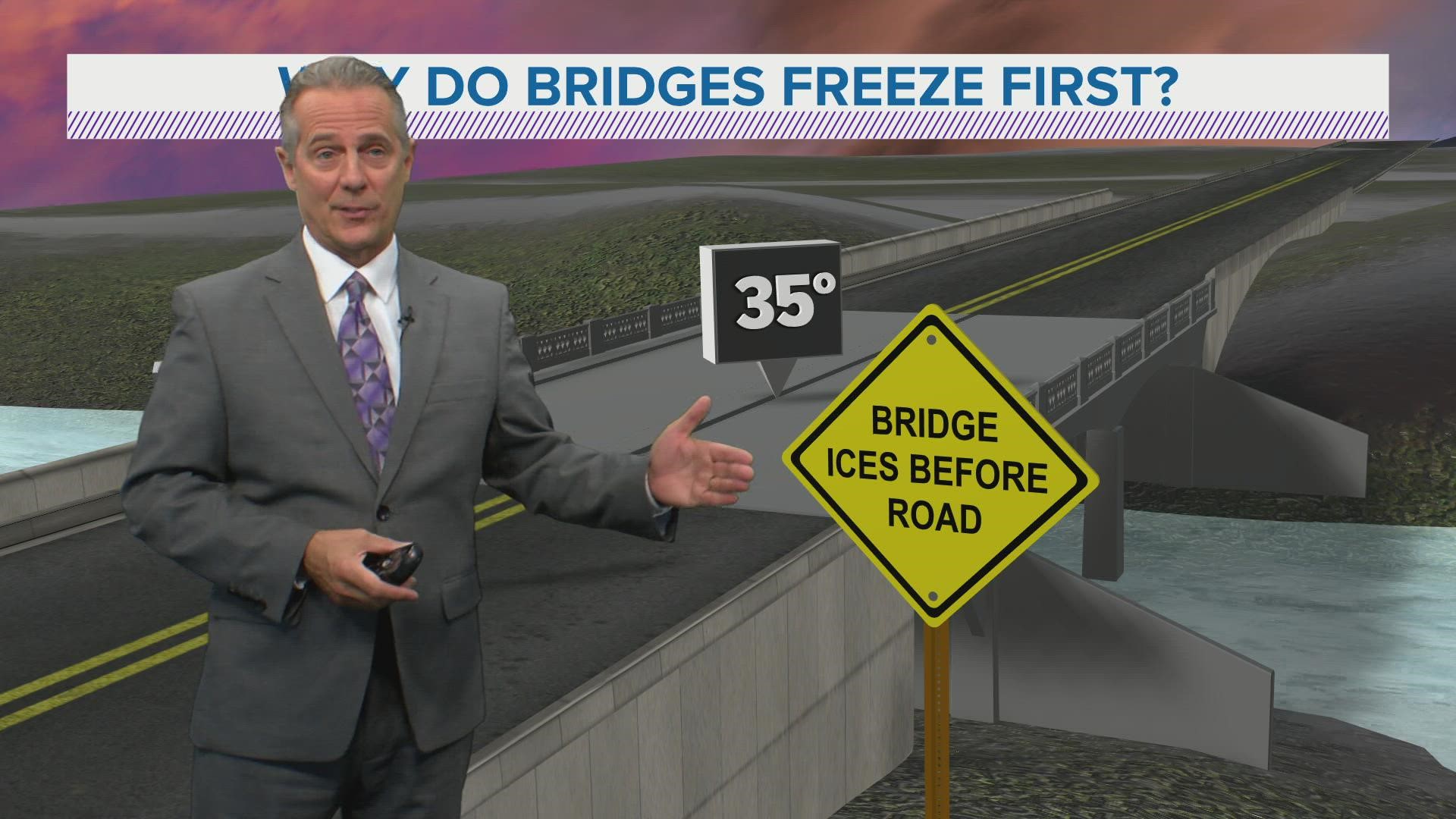DES MOINES, Iowa — Have you ever seen signs that say "Bridge may be icy" or "Bridge ices before road"?
These signs are designed to alert travelers conditions may be slicker on bridges than normal roads.
How does that happen?
Most roads lose heat evenly, but unlike normal roads which have the ground to help insulate them, cold air reaches both above and below bridges.
This results in quicker heat loss and allows bridge temperatures to drop faster than normal road temperatures.
Generally speaking, bridge temperatures follow air temperatures a lot closer than road temperatures do.
If there is any kind of moisture on the road — whether it be from previous rain or current snowfall — there is potential for bridges to ice over before other roads.
This same logic applies to snow accumulation.
This particular situation is most common in the fall when ground temperatures are still above freezing, but the air temperature drops below freezing.
When ground temperatures are below freezing in the heart of winter, snow and ice will accumulate on both normal roads and bridges equally.
In the spring, there can be times when the ground temperature is much colder than the air temperature, and therefore normal roads have a greater chance of being slick than bridges.
Whenever slick or snowy conditions develop on bridges and other roads, it's important to slow down and avoid slamming on the brakes.
It is better to assume a road or bridge is slick rather than getting caught by surprise.
► Download the We Are Iowa app
► Sign up for Local 5's "5 Things to Know" email newsletter
► Subscribe to Local 5 News on YouTube
Watch more Local 5 Weather Lab segments on YouTube

